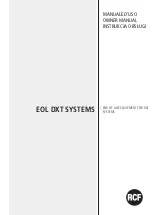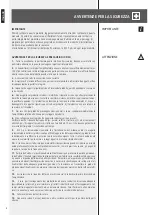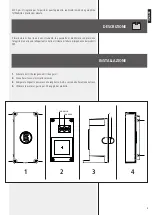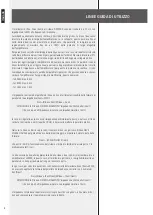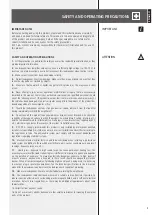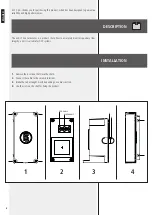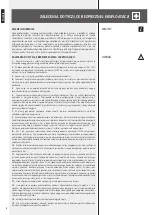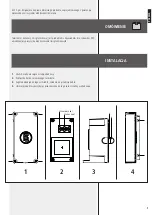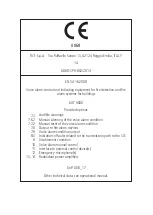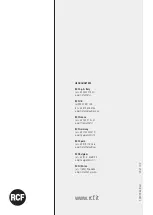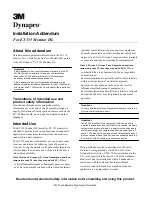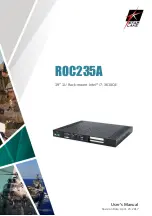
ENGLISH
USE GUIDELINES
End of Line (EoL) equipments for DXT systems are 20 Hz resonators, with an impedance of
200Ω at the resonance frequency.
Absorbing reactive power only, users can install EoL on a speakers line without affecting
the rated power of the amplifier it is connected to; however, this is valid considering the
impedance measurement dynamic, which allows to perform this calculation up to a
maximum of 150% of the amplifier rated power.
To ensure proper lines monitoring in those cases where the constraint on the last branch
speaker is not satisfied (the percentage weight of the last speaker is less than 5% of the
line impedance), at the end of each branch line, an EoL must be connected.
For each amplifier model a maximum number of EoL is defined (so of the line branches)
installable on a single line; this is due to limits of the impedance measuring circuit dynamic
and the amplifier (even if the power is reactive, losses of the parasitic parameters have to
be considered, that can overload the amplifier). For each type of amplifier, this number is:
- 1x500W: max 5 EoL
- 1x250W: max 4 EoL
- 1x125W: max 2 EoL
The resulting impedance of the lines parallel and EoL is easily obtainable from the formula
of parallel impedances (Zeol=200Ω):
Ztot=(Zline x Zeol)/(Zline + Zeol)
WARNING: Zline is NECESSARILY the line impedance at 20Hz!!!
(it is not equal to the impedance measured with an impedance meter at 1kHz)
In case of single line with very low impedance load, or in the case of lines loaded with
horns or similar (open at 20Hz), more EoL must install in parallel.
If the line is split over multiple branches, the number of EoL on each branch MUST BE
EQUAL to ensure proper monitoring and comply with the constraint given by the formula:
Neol> (200Ω) / Ztot (21-Nbranches)
that, within system’s operational limits it is 1 in most cases.
The only exception is represented by a line with two branches of horns on a 1x500W
amplifier; in this case, at the end of each branch, 2 EoL in parallel should be installed to
be in the range of measuring.
In any case, to calculate how many EoL are needed in a specific line (Zeol = 200Ω), the
formula of parallel impedances must be applied, correct with the number of EoL (Neol):
Ztot = (x Zline (Zeol / Neol)) / (Zline + (Zeol / Neol))
WARNING: Zline is NECESSARILY the line impedance at 20Hz!!!
(it is not equal to the impedance measured with an impedance meter at 1kHz)
The total impedance must respect the constraints described above, and the number of EoL
can not exceed the maximum number indicated above.
7

